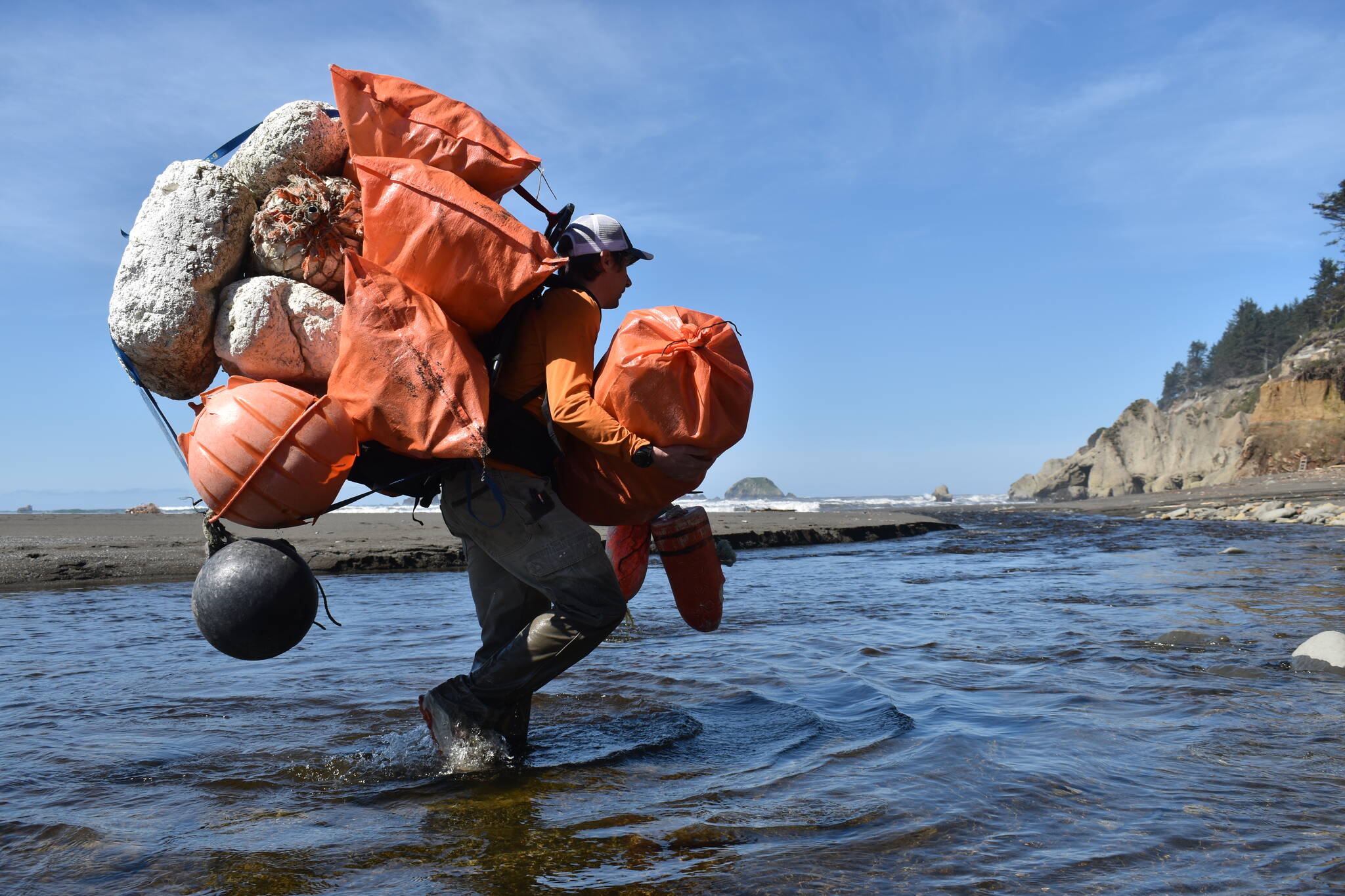A group of volunteers combed remote beaches on the Quinault Indian Reservation for two days over Easter weekend, bagging and hauling away nearly 30-cubic-yards of marine debris over the course of two days.
Some beaches, off limits to nontribal members and accessible only by trail, had never been cleaned in an orchestrated effort.
The group, led by a Quinault Indian Nation natural resource specialist, representatives from local environmental groups and shellfish growers, obtained permission the from the Quinault Tribal Council to access the reservation’s coast, aiming to clean up trash from hard-to-reach beaches.
Decades of storms and high tides pushed loose ocean trash above the sand into dunes and coastal forests, where brush and thickets strained fishing floats, plastic bottles and other debris from the waves.
Volunteers clambered over piles of driftwood and scaled small bluffs to pry years of deposited debris from the rugged coastline, sawing away tangled ropes and plucking scattered Styrofoam. A folding table, air mattress and inflatable rafts were the largest items removed, all hauled out on muddy foot trails with frame packs.
According to the National Oceanic and Atmospheric Administration, most of the debris that washes up in the Pacific Northwest traces back to countries across the ocean.
A 2022 study by the University of Washington used citizen science to survey trash on more than 800 beaches in the Pacific Northwest. About half of the trash found on Puget Sound beaches was made of plastic, with the rest being heavier items, suggesting the litter originated closer to where it was found.
On the outer coast, 90% of the trash was plastic, often broken into pieces. Accumulation followed seasonal weather patterns, with levels rising in the spring after winter storms, suggesting it came from further away.
“The trash isn’t coming from the people that go out there, it’s coming from the ocean,” said Lee First of the Twin Harbors Waterkeeper, an environmental group with a focus on water issues.
While much trash also lands on beaches further south in Grays Harbor, more populated areas tend to see more frequent cleanups, First said. First contacted Scott Mazzone, a fisheries biologist with the Quinault Division of Natural Resources, to organize the cleanups.
In 2020, a study co-authored by Mazzone found razor clams contained traces of microplastics at eight different test sites along the Washington coast. Plastic material in the filter feeders was more prevalent in gut tissue and could be reduced by 50% by cleaning clams before consumption.
According to its website, the tribe has also worked with other groups, like the Washington Coastsavers, to conduct marine debris cleanups on the reservation.
The marine debris threat to shellfish, and the broader ecosystem, is what led Pacific Shellfish, a subsidiary of Pacific Seafoods, a processor in Westport, to help with the effort. The company stationed a massive 30-cubic-yard dumpster temporarily just north of Taholah, where volunteer crews dumped eight stuffed pickup truck loads of debris.
Kyle Deerkop, shellfish farm operations manager for the company, helped organize the cleanup and lugged many pounds of trash from the beach through the woods to the trucks.
“We make our living from this place,” he said of the ocean. “Why would we want this trash here on the beach? It shouldn’t be here, and we should all work together to clean it up. That to me is the coolest part about the effort.”
With three cleanups completed, the group has permission for another four years to comb marine debris from the reservation’s beaches. First said there are two cleanups planned per year, but more could be added as needed.
“You’re not going to fix it all in a day, but it’s not going to fix itself,” Deerkop said. “So you have to make the effort.”
Contact reporter Clayton Franke at 406-552-3917 or clayton.franke@thedailyworld.com.


